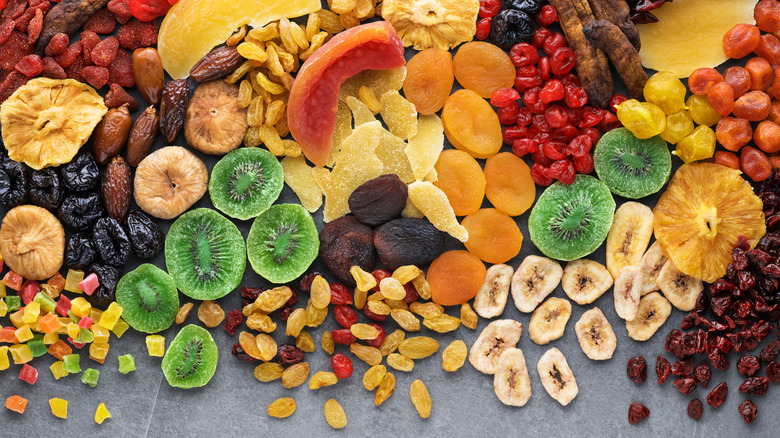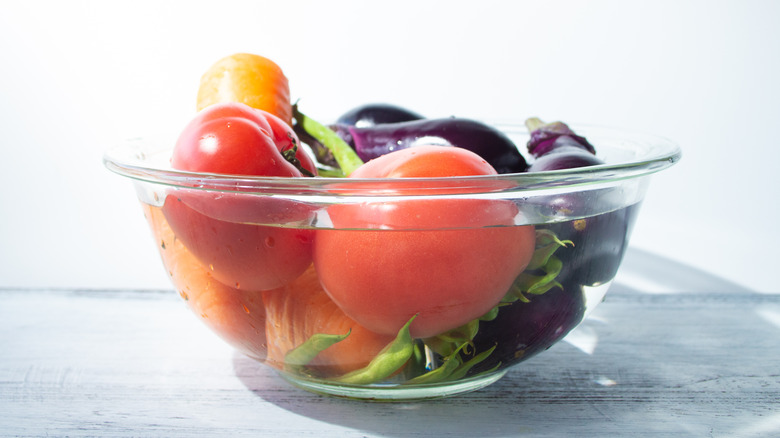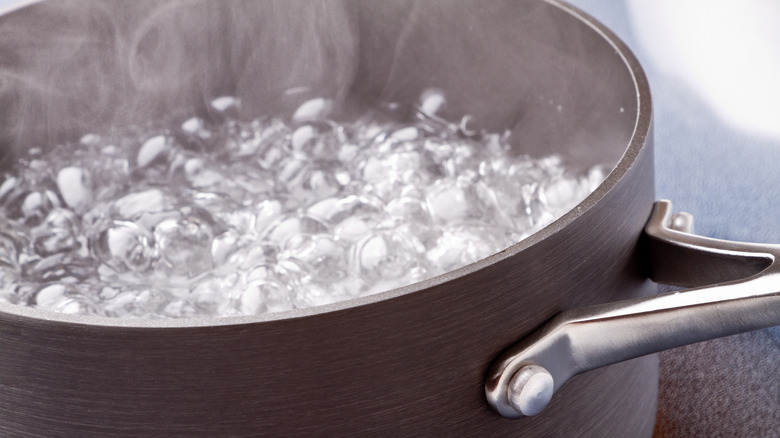The Foolproof Process To Rehydrate Dried Food
Whether you're a backyard gardener with veggies to preserve or a bulk shopper looking to save valuable freezer space, the wonders of dehydration have a lot to offer. Dried food is a great option for people who want to declutter their pantry and preserve food in a cost-effective way. By dehydrating, you can create storage-ready food that doesn't need to be frozen, canned, or otherwise preserved.
Some dried foods make great snacks on their own — think dehydrated apple rings or pear slices. But most dehydrated foods are too tough to eat without rehydration.
When it's time to rehydrate your bounty, proper techniques will help you enjoy the original flavors and textures of your food. It's as simple as adding water! Use the right water temperature, water-to-food ratio, and soaking time, and you'll enjoy all the tasty benefits that rehydrated food has to offer. From fresh veggies to beans to full meals, the possibilities are endless!
Just add water
To rehydrate your food, place it in a large bowl and cover it with cold water. You should use twice as much water as food. For example, add 2 cups of water to 1 cup of dehydrated vegetables. Make sure all food is completely submerged, then leave it to soak. This will take at least 20 minutes and could take an hour or more.
Surprised by that time range? Rehydration isn't an exact science, and some foods rehydrate faster than others. It's important to check your food and monitor its rehydration process. The key to successful rehydration is attention — keep an eye on your food so you can track how it's doing and know when it's ready!
Rehydrated food looks plump and larger than its dehydrated counterpart, but it might not return to its original appearance. Even after being rehydrated, veggies and fruits can appear a little wrinkly. If you're not sure about the status of your food, you can do a taste test. After rehydrating with cold water, you can munch on uncooked foods like raw veggies.
Bring it to a boil
In a rush? Don't worry — in a pinch, you can use boiling water to rehydrate food and cut down on soaking time. To use this method, place your dehydrated food in a heat-safe container and pour boiling water over the food. Once your food is completely submerged, cover the container and let it sit for 20-45 minutes. For tougher items like dried beans, you'll want to let the food simmer for a few minutes before taking it off the heat and letting it soak in the hot water.
Most ready-made dehydrated meals call for hot water. If you're rehydrating a prepackaged product like a backpacking meal, follow the instructions provided for the ideal texture.
Remember that rehydration is not a replacement for cooking, even when you use hot water to revive your dried goods. If your food was uncooked when you dehydrated it, you'll want to cook it after rehydrating. Think of rehydrated foods as an ingredient, not a completed meal!


